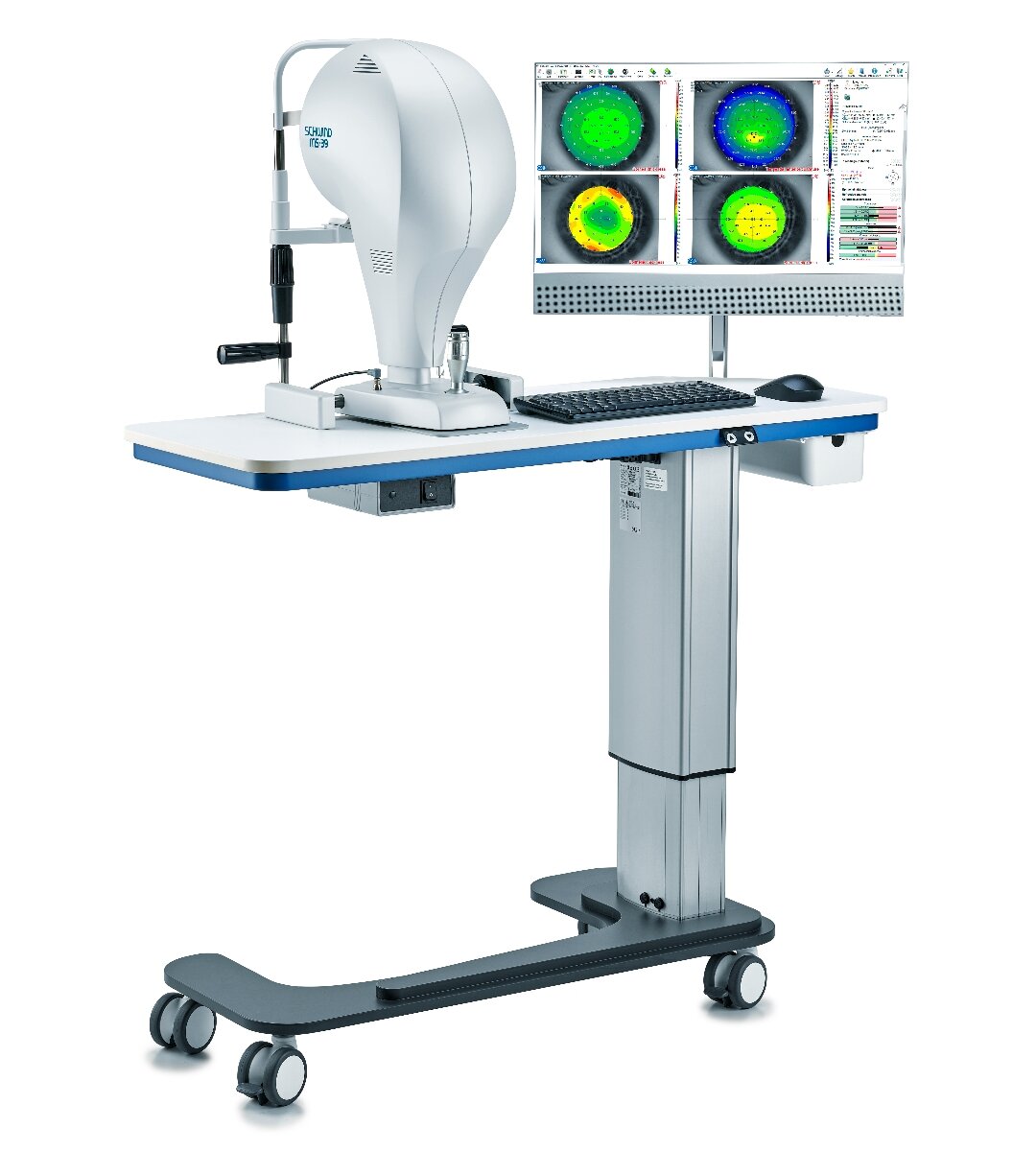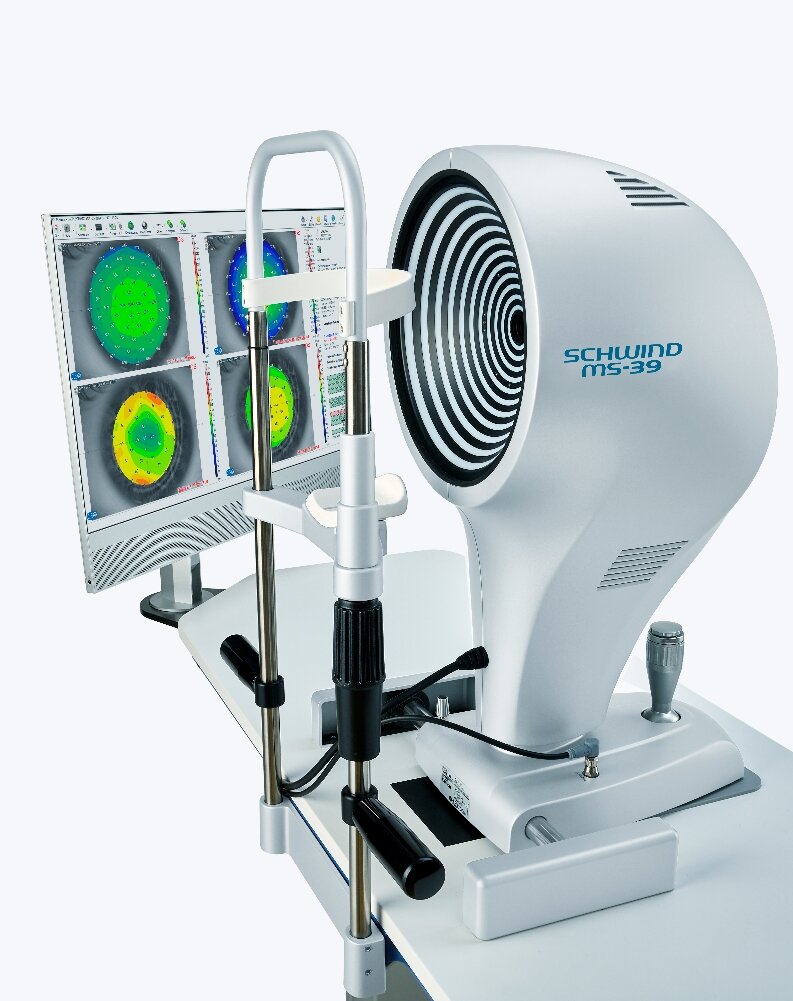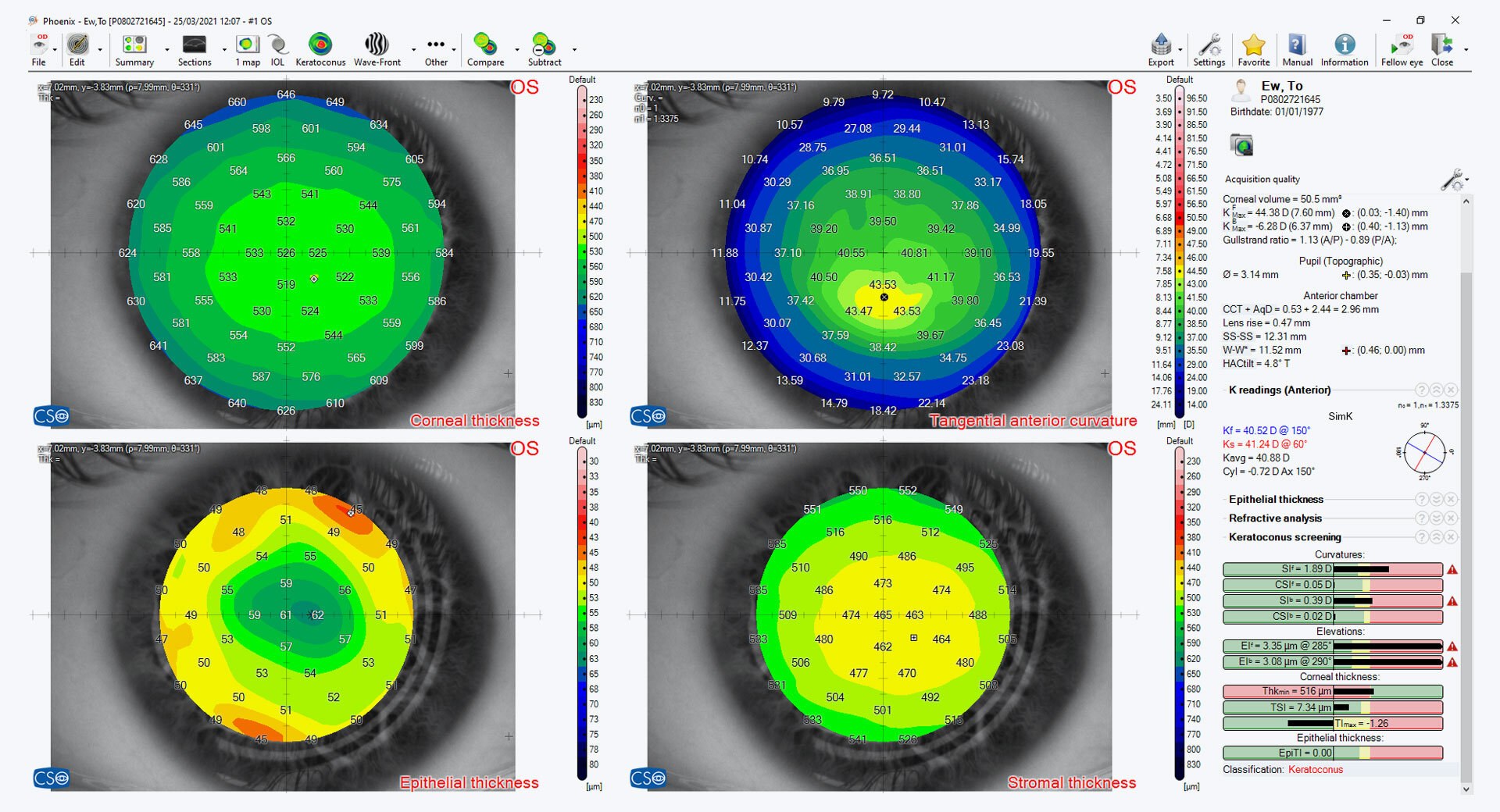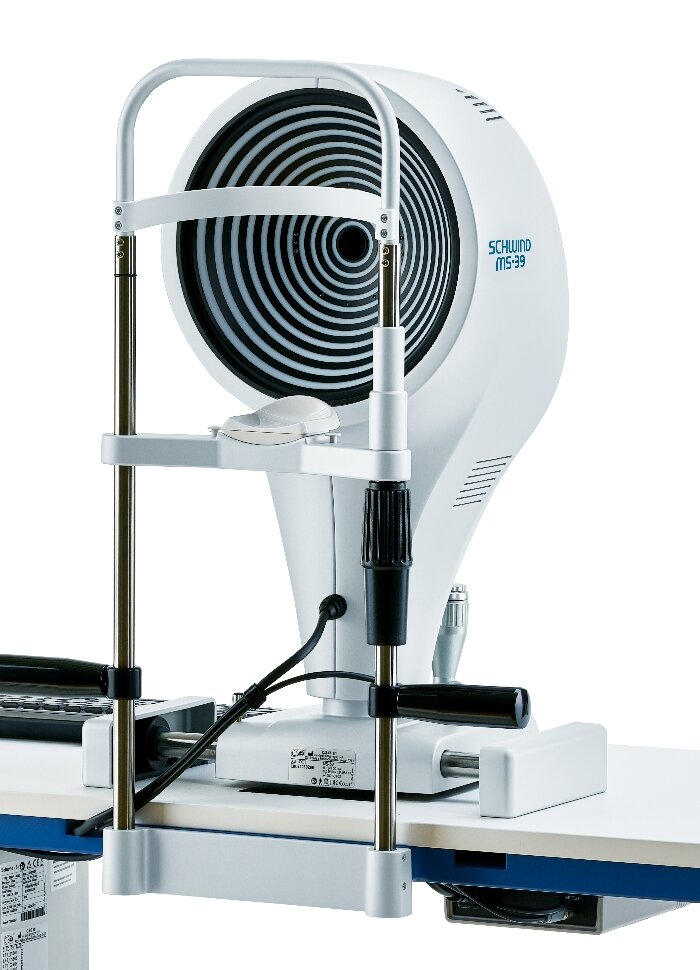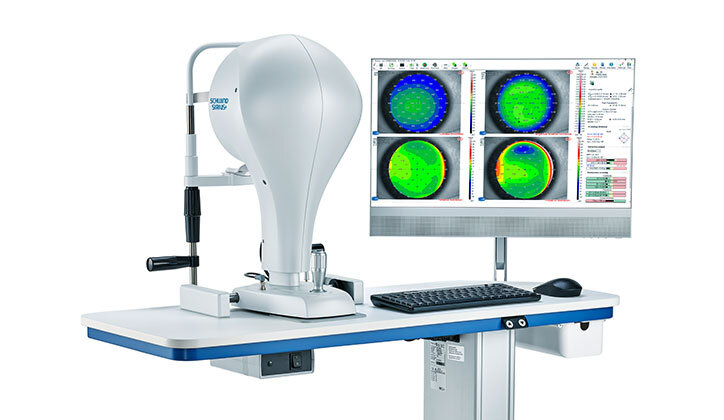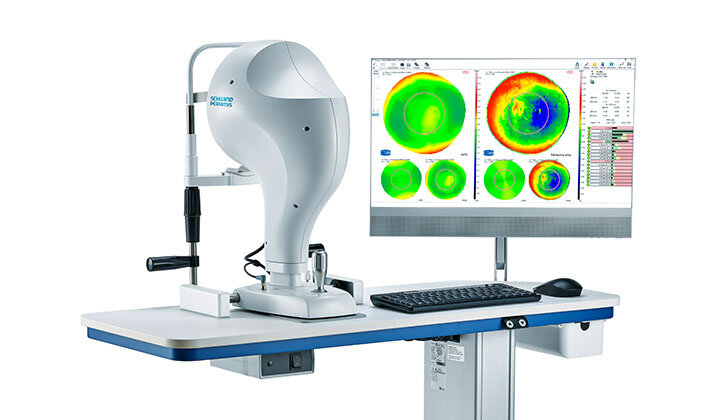DIAGNOSIS
SCHWIND MS-39 –
High-performance OCT and topographer
HD imaging for more corneal details
The SCHWIND MS-39 optical coherence tomograph (OCT) provides a quantum leap in corneal diagnosis. Best possible treatment decisions can be made thanks to an impressive level of detail.
The combination of the latest generation of spectral domain OCT and Placido topography offers excellent resolution and reveals the structure of the cornea down to the last detail.
Cross sectional images with an extremely large diameter of a maximum of 16 millimetres can be displayed for the entire anterior segment of the eye.
Benefits at a glance
Particularly detailed measurement of the structure of the cornea in all its layers
High-precision information on pachymetry and elevation, curvature, and dioptric power, each in relation to the anterior and posterior corneal surface
Greater diagnostic certainty thanks to in-depth information about the epithelium
Particularly precise representation as an epithelium map with a resolution of 3.6 micrometres thanks to spectral domain technology
Excellent image quality for the anterior segment of the eye across a diameter of up to 16 millimetres
More precise centring and results through static cyclotorsion correction information for treatment with SCHWIND AMARIS and SCHWIND ATOS laser systems
Higher level of detail
With the SCHWIND MS-39, epithelial and stromal tissue can be examined separately from one another – particularly helpful before transepithelial treatments or during keratoconus screening or postoperative evaluation of the lenticule. The high resolution sections also allow for more precise analysis of the depth extension of corneal opacities. The epithelial masking effect is a well-known phenomenon, and its morphological evaluation is a useful method for the assessment of anomalies on the corneal surface.
In addition to high-resolution cross-sectional images of the cornea, the SCHWIND MS-39 also provides imaging details of the iridocorneal angle, iris, and lens. This allows for a well-founded diagnosis which is individually tailored to the patient and makes the laser treatment even safer.
Corneal aberrations at a glance
The SCHWIND MS-39 allows for a particularly detailed overview of the cornea including the corneal aberrations. Here, the user can differentiate between the anterior, posterior, or entire cornea. Maps and simulations help with analysis, as well as when talking to patients.
More benefits
Keratoconus screening
This convenient tool provides important corneal data and can make a pre-operative contribution to avoiding possible complications associated with ectasia.
IOL calculation
The calculation module for intraocular lenses, based on ray tracing technology, is excellently suited for treatment planning of refractively treated or untreated eyes.
Intrastromal rings
Placement of intrastromal rings can be planned exactly with the help of pachymetry maps and a corneal elevation profile.
Glaucoma screening
Various useful screening parameters assist glaucoma specialists with diagnosis
Pupillography
The integrated function captures the pupil diameter dynamically or statically depending on the defined lighting conditions. Precise data concerning the pupil centre and diameter are essential for planning and performing most refractive treatments.
Lens biometrics
The crystalline lens thickness and their position in the eye can be precisely determined to support refinement of the IOL calculation
“Dry eye” analyses
The Placido technology allows for analysis of the condition of the tear film. This information provides support when diagnosing the symptoms of “dry eye”.
Manufacturer: CSO SRL, Italy / For some countries, availability may be restricted due to regulatory requirements. Please contact SCHWIND eye-tech-solutions for details.
SCHWIND User talk about SCHWIND MS-39

Dr Diego de Ortueta

Optometrist Robert Herber
SCHWIND diagnostic systems - High-precision, multi-functional, easy to use
The SCHWIND MS-39, SCHWIND SIRIUS+ and SCHWIND PERAMIS contactless diagnostic systems offer an impressively wide range of measurement methods for refractive and therapeutic corneal surgery. Equipped with high-resolution technologies, they provide comprehensive support for the individual treatment decision – whether with corneal and ocular wavefront data, pachymetric or epithelial data (OCT-based). The systems impress with ergonomically well thought out detail functions, a high level of user-friendliness and a seamless connection to the SCHWIND laser systems, and work with the convenient Phoenix software. Patient data and reports from all three diagnostic systems can be saved in a shared database. Summary: high-performance diagnosis paired with improved efficiency in daily clinical practice. The diagnosis data can be imported into SCHWIND treatment planning software with a click of the mouse.
Benefits at a glance:
- High-performance diagnosis for well-founded treatment decisions
- Easy to link with the treatment planning software
- More precise centring and enhanced results through static cyclotorsion correction information for treatment with SCHWIND AMARIS and SCHWIND ATOS laser systems
Manufacturer: CSO SRL, Italy / For some countries, availability may be restricted due to regulatory requirements. Please contact SCHWIND eye-tech-solutions for details.
What is SCHWIND Foresight®?
SCHWIND Foresight® is a unique, intuitive and sophisticated software solution to visualise the effect on the cornea of each individual refractive surgery treatment upon planning. Foresight creates a virtual replica of the individual patient‘s cornea. Based on it, surgeons can dry run surgery, reflect their planning and educate their patients about the planned ablation profile and the expected outcome.
